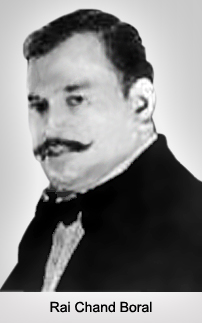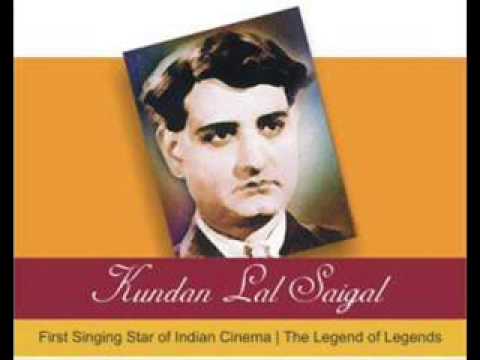Raaga Based Song of the Day: Baabul mora, naihar chhooto hi jaaye…
Raag Bhairavi, Tal Kaherava
We have completed ten days of Raaga Based Songs of the Day. Our first post in the series was titled ‘Raaga Based Song Of The Day #1’ and the song was a Mohammad Rafi and Lata Mangeshkar song from the 1970 Shakti Samanta movie Pagla Kahin Ka: Tum mujhe youn bhula na paoge (It is in Raag Jhinjhoti, Tal Kaherava).
Our tenth post or the last post was titled ‘Raaga Based Song Of The Day #10’ and the song was a Suraiya song from the 1961 Lekhraj Bhakri movie Shama: Dhadakte dil ki tamanna ho mera pyar ho tum. It is in Raag Pilu, Tal Kaherava.
This blog has a number of posts on Raaga based songs in Hindi movies titled similarly; for example: ‘The Best Raaga Based Songs in Hindi Movies – Raaga Yaman – Part III’.
Today we shall take up a song based on Raag Bhairavi.
Raag Bhairavi is the main raaga of Bhairavi Thaat, one of the ten Thaats on which, in Bhatkhande’s system of Raagas, all raagas are based.
In Hindi film Bhairavi is the most popular raagas on which songs are based. In case of Jaikishan (of Shankar Jaikishan fame), he was so fond of Raag Bhairavi that he named his daughter Bhairavi!

However, the use of Bhairavi in Hindi film songs existed much before Jaikishan. Rai Chand Boral, the composer of the above song, was country’s second music director, to be honoured with the highest award in cinema; the first being Pankaj Mullick and the third and last being Naushad Ali.
I am in awe of Bhairavi and that’s why it has taken me so much time to get to it. It is traditionally performed in early morning hours simply because of the fact that late night musical performances usually end in wee hours of the morning and Bhairavi is the finale Raaga.
Some of the most popular songs in Hindi films have been composed in Bhairavi such as Babul mora naihar chhooto hi jaye, Jyot se jyot jagate chalo, and Laaga chunari mein daag.
As far as S-J are concerned, they would sometimes have as many as four to five songs in the same movie based on Bhairavi. Just to name a few: Awara hoon, Barsaat mein humse mile tum, Dost dost na raha, Mera joota hai Japani, Ramaiya vasta vaiya, Ai mere dil kahin aur chal, and Bol Radha bol sangam hoga ke nahin.
Value added learning for today is about two aspects of Bhairavi:
One is the reason for Bhairavi being the first raaga to be taught to beginners. It is because in the South, Sri Purandra Das had decided that Malawa gowla was most suited for beginners. Bhairavi is the corresponding raaga of the North.
And the second is as to why Bhairavi is usually the last raaga during a performance. Once again the reason is from Carnatic Music. Carnatic equivalent Madhyamavati is performed at the end of the concert since it is believed to “cure” all mistakes by performer during earlier performances. Also, the devotional and peaceful bhaav of Bhairavi makes it well suited as a concluding piece.
Babul mora is basically a thumri in Raag Bhairavi. It was penned by Nawab Wajid Ali Khan, the Nawab of Awadh, when he was exiled by the British from his beloved Lucknow by the British.
Nawab Wajid Ali Shah used the metaphor of bidaai (bride’s farewell) from her father’s (babul) home to bring out the sadness of his exile from Lucknow.
The Thumri was also popularised by Bharat Ratna Pandit Bhimsen Joshi.
In the 1938 Phani Majumdar movie Street Singer, one of Hindi movies greatest vocalists and the first super-star, much before Rajesh Khanna was even born, Kundan Lal Saigal performed this song live on camera since playback singing hadn’t yet become popular.
Ladies and gentlemen, today on my birthday (06 June), I give you the song (thumri) that gets as close as possible to pure form of Bhairavi.
Please enjoy Baabul mora naihar chhooto hi jaaye…
Baabul moraa, naihar chhuuTo hii jaae
baabul moraa, naihar chhuuTo hii jaae
chaar kahaar mil, morii Doliyaa sajaave.n – 4
moraa apanaa begaanaa chhuTo jaae
baabul moraa …
aa.Nganaa to parbat bhayo aur deharii bhayii bidesh
je baabul ghar aapanaa mai.n piiyaa ke desh
baabul moraa …
baabul moraa, naihar chhuuTo hii jaae
baabul moraa, naihar chhuuTo hii jaae
We have intended to learn about Raaga based music whilst we entertain ourselves with Raaga based songs. So, lets, once again, take stock of our collective learning so far:
- On the first day we learnt about the Raaga system devised by Pandit Vishnu Narayan Bhatkhande, which is the prevalent system in Hindustani Classical Music and based on ten Thaats.
- On the second day we learnt about Tal or Taal.
- On the third day we learnt about characteristics of Raagas that included Swar, Jati, Thaat, Arohana and Avarohana, Vadi, Samvadi and Pakad.
- On the fourth day, we learnt about Sargam.
- On the fifth day, we learnt about notations used in Indian classical music or simply Swar Lipi.
- On the sixth day, we learnt about the Ras (sentiments) that Raagas evoke.
- On the seventh day, we learnt about various types of Swar: Shuddha, Achal, Vikrut, Komal and Teevra.
- On the eighth day, we learnt the parts of a composition in Indian Classical Music.
- On the ninth day, we learnt the names of some of the popular instruments used in Indian Classical Music.
- On the tenth day, we learnt about the sources of names of Raagas.
- And today, on the eleventh day, we learnt about why Bhairavi is the first raag to be taught to beginners and also why it is the last in a performance.
There is much more still to be learnt and enjoyed.
Please stay tuned!

Elated… thanks.